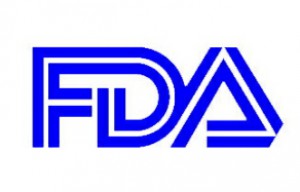Remember the discussion about color additives that was prompted by the Starbucks decision to stop using cochineal extract, a natural red food colorant, in their products? A few times every year, the FDA has to send a warning letter to corporations who are still using banned color additives.
 Artificial food colors have a long and storied history in this country. In fact, the 1906 Pure Food and Drug Act was passed in part to prohibit the use of poisonous food colors that were used to conceal rot and damage. In 1960, the Color Additive Amendment classified the 200 color additives that were currently in use as provisionally listed until scientific data established that they was safe.
Artificial food colors have a long and storied history in this country. In fact, the 1906 Pure Food and Drug Act was passed in part to prohibit the use of poisonous food colors that were used to conceal rot and damage. In 1960, the Color Additive Amendment classified the 200 color additives that were currently in use as provisionally listed until scientific data established that they was safe.
Several artificial food colors have been delisted and banned by the FDA over the years, including Red No. 2, Red No. 4, Orange Number 1, Orange Number 2, Yellow Nos. 1, 2, 3, and 4, and Violet No. 1.
In 1990, the Nutrition Labeling and Education Act mandated that certified color additives, or those that are manmade, must be listed on the ingredient label.
In the current Warning Letters Update, two facilities were warned that they had violated color additive laws.
Herman’s Bakery in Cambridge Minnesota was sent a warning letter on February 22, 2012. In it, in addition to misbranding and undeclared allergen violations, the company is told they did not list artificial colors Yellow 6, Blue 1, and Red 40 on the ingredient label, in violation of 403(k) of the Federal Food Drug and Cosmetics Act, 21 U.S.C. § 343(k).
Lucky Taco Inc. of Hustisford, Wisconsin received a warning letter on April 2, 2012. The letter states they misused artificial color Yellow No. 5 in Java Mint flavored Lucky Cruncher cookie product, which is made with coffee liqueur flavor that contains the colorant. That is a violation of the Federal Food Drug and Cosmetics Act, 402(c) of the Act, 21 U.S.C. § 342(c). In addition, the same cookie contains Red 40, Yellow 6 and Blue 1 that are not declared on the label.




